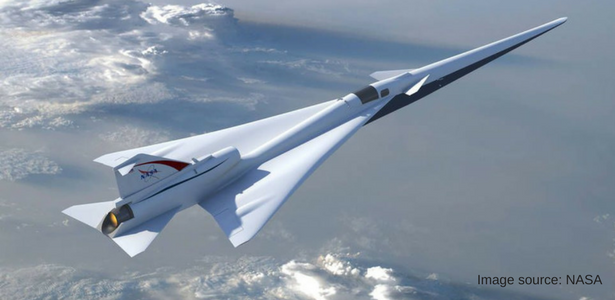NASA has announced plans to create a new supersonic aircraft called the X-plane. Like the Concorde, it would travel twice as fast as regular commercial aircraft.
But what will make it different than the Concorde? Part of the reason that the Concorde failed (besides its exorbitant ticket rates) was that it was limited in its destinations. Traveling over Mach 2 breaks the sound barrier, producing a startling sonic boom. Because of noise ordinances, Concordes were not allowed to break the sound barrier when flying over land, confining flights to transatlantic destinations.
The developers of the X-plane hope to remedy the sonic boom issue by developing a supersonic aircraft that won’t create a sonic boom when it breaks the sound barrier. How? By changing the shape of the aircraft, creating a series of smaller rumbles instead of a giant boom.
The shape shift will be almost imperceptible, says Rodney Bowersox, director of the Texas A&M National Aerothermochemistry Laboratory
A little tweak goes a long way when it’s traveling 30,000 feet to the ground. It’s not like transformers where the plane is really going to change shape or anything.
The goal is to shape the airplane such that the shockwaves generated by the plane don’t coalesce into a large shockwave that hits the ground.
You want a series of smaller waves so it sounds more like a rumble and less like a boom.
If all goes well, NASA anticipates the first flight of the prototype to take place in 2021.
Once an aircraft is developed that doesn’t produce sonic booms, supersonic air travel will become commercially viable. However, there will be one last hurdle before you can travel from New York to LA in 2 ½ hours: getting the Federal Aviation Authority to approve an aircraft that changes shape mid-flight.


